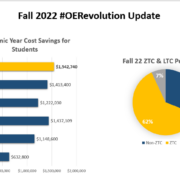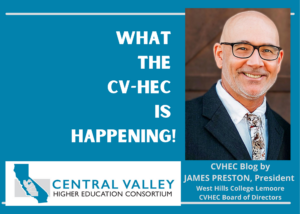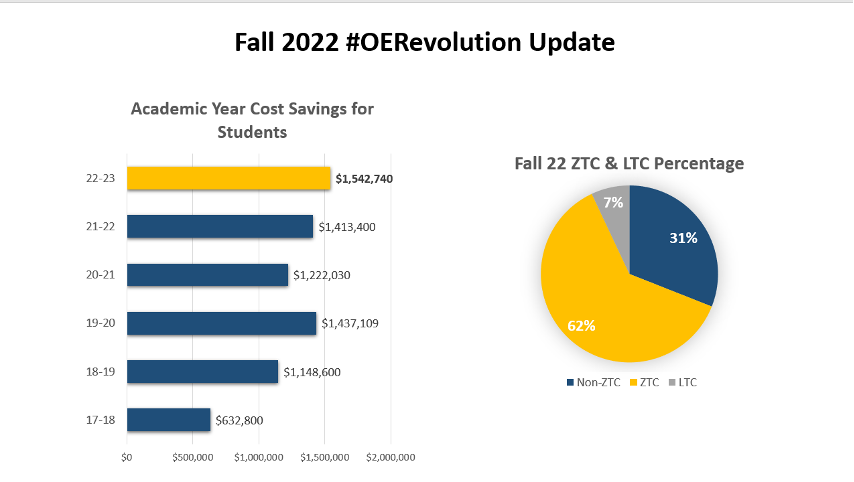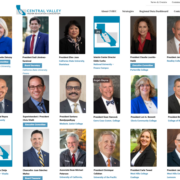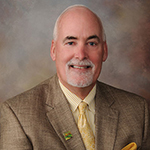Zero-Textbook-Cost/OER Movement picks up steam with $115m state grant
West Hills College Lemoore Among the Statewide Leaders; CVHEC Establishes Regional ZTC Task Force
The Central Valley Higher Education Consortium (CVHEC) is creating a regional task force to support its member institutions interested in reducing the overall cost of education for students and decreasing the time it takes students to complete degree and certificate programs by using alternative instructional materials and methodologies, including open educational resources (OER).
One of the first goals of the task force will be to support members in applying for new state funding for the California Community Colleges to establish Zero-Textbook-Cost programs systemwide.
Dr. Benjamín Durán, CVHEC executive director, sent out a call to members in late August to recommend appointments to the Central Valley Zero-Textbook-Cost Task Force.
“This task force will bring attention to how districts can access the $115 million available to community colleges to implement the program and benefit their students,” Duran said. “We hope the task force will help create a collaborative environment to support each other in providing zero cost textbooks to our students.”
He anticipates the task force will be named in early October and set its first meeting shortly after to ensure members are aware of CCC’s ZTC webinars.
Duran is working with James Preston, president of West Hills College Lemoore and member of the CVHEC Board of Directors, who has been at the forefront of the ZTC Degrees Movement with the California Community Colleges Chancellor’s Office.
“Zero-textbook-cost degrees” means community college associate degrees or career technical education certificates earned entirely by completing courses that eliminate conventional textbook costs by using alternative instructional materials and methodologies, including open educational resources (OER).
In a blog for this issue of the CVHEC e-newsletter, President Preston explains that Open Educational Resources are free, openly licensed and accessible materials that faculty can retain, revise, remix, reuse, revise and redistribute. OER materials come in many forms such as open textbooks, videos, articles and ancillary support materials.
“When creatively combined into a Canvas course shell, OER create what we now know as a Zero Textbook Cost (ZTC) course,” he said. “Teamwork between discipline faculty, an area administrator, library or instructional design support and student services personnel, along with the financial support for people to collaborate, can quickly move things from a ZTC course to a ZTC degree.
“Add in a dose of creativity, strategy, policy, equity and guided pathways thinking and you are on your way to a full OERevolution,” the West Hills College Lemoore president writes.
This OERevolution started for West Hills College Lemoore in 2016 when the campus received a $100,000 grant from the Achieving the Dream (ATD) network to create a Zero Textbook Cost (ZTC) degree for an Associate in Arts for Transfer (AA-T) in Elementary Education.
Other CVHEC members receiving the 2016 seed funding were Reedley College, Taft College and WHC- Coalinga. CVHEC four-year members also utilizing the Zero Textbook Cost Program are Fresno State (see video “Be A Hero: Adopt Open Educational Resource” and press release “Fresno State partners with OpenStax to increase use of free textbooks on campus”) and National University.
CVHEC audience members wishing to recommend task force participants may email Angel Ramirez, Operations & Finance Manager, at angelr@csufresno.edu.
Links
What the CV-HEC is Happening Blog by WHC-L President James Preston (September 2022 CVHEC Newsletter).
WHC-Lemoore OER – (https://www.westhillscollege.com/lemoore/oer/)
OER video – (https://youtu.be/qop5VhYv2nw)
California community colleges implement zero-textbook-cost (Inside Higher Ed – Sept. 19, 2019)


